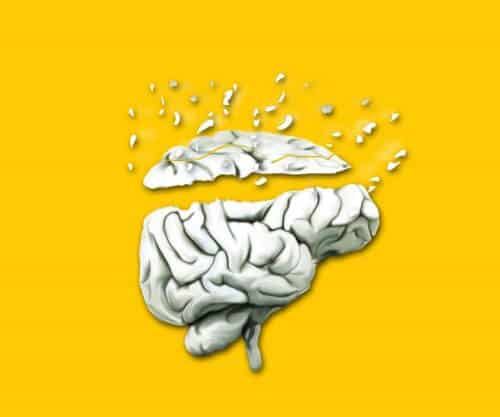Does a chain reaction of toxic proteins underlie all degenerative diseases of the brain?/Diana Kwon

The article is published with the approval of Scientific American Israel and the Ort Israel network
In the human version of "mad cow disease", known as Creutzfeldt-Jakob disease, the brain degenerates, and empty spaces are created in it, causing rapidly worsening dementia. In 90% of the cases, patients with the disease die within a year. The causative agents of the disease are prions: proteins that have undergone incorrect folding and can cause normal proteins found around them to also fold incorrectly and accumulate. Scientists knew that these pathological proteins, which multiply on their own, cause some rare brain diseases, such as the kuru disease common in Papua New Guinea. But accumulating evidence suggests a role for prions in many, if not all, neurodegenerative diseases, including Alzheimer's, Huntington's, and Parkinson's, which are also characterized by accumulations of misfolded proteins.
Until recently, there was no evidence that the disrupted proteins found in the brains of people suffering from these well-known diseases could be passed directly from person to person. But the trend changed abruptly in September 2015, when a new study published in the journal Nature provided the first hint that such human-to-human transmission might be possible.
John Colling, a neurologist from University College London, and his colleagues performed autopsies for their study on eight patients who died between the ages of 36 and 51 from Creutzfeldt-Jakob. All subjects contracted the disease after being treated with growth hormone that was later found to be contaminated with prions. But a surprise awaited the researchers when they discovered in six of the brains also hallmarks of Alzheimer's: clumps of beta-amyloid proteins that characterize the disease, even though the patients were supposed to be too young to have such symptoms.
These observations suggest that the infected hormone injections may have contained small amounts of beta-amyloids that stimulated the formation of more proteins like them. Neither Alzheimer's nor any human prion disease known today is contagious by direct contact. However, such infection of humans with prion diseases did occur due to certain medical procedures, and in the case of Kuru due to cannibalism. The new research therefore raises the possibility that Alzheimer's is an infectious disease with an etiology similar to that of the prion diseases.
The new finding is causing reactions, but experts suggest caution against misinterpretation of the results. For example, neurobiologist John Troynowski of the University of Pennsylvania points to the small sample size and the lack of direct evidence of contagion that might support a causal relationship. But if it eventually turns out that Alzheimer's and other neurodegenerative diseases of the nervous system do indeed share the same pathological pathway and the same mechanism, then treatments will be able to be adapted to all these diseases.
"Infection may only occur in a small proportion of cases in humans," says Claudio Soto, professor of neurology at the University of Texas Health Science Center in Houston. "But the principle underlying the phenomenon is the important thing, and it may lead to new treatment and diagnostic opportunities." Scientists such as Soto and Colling are now investigating ways to detect small clusters of infectious proteins in body fluids, the kind suspected of being involved in Alzheimer's and other degenerative diseases. Such tests may promote ways to diagnose this type of disease.
But it is assumed that it will be difficult to discover the damaged proteins. In a study conducted by Matthias Uecker of the University of Tübingen in Germany and his colleagues, which was published in the online issue of Nature Neuroscience in September 2015, they required particularly sensitive methods to locate tiny aggregates of beta-amyloid proteins, known as aggregation nuclei, in the brains of mice. These nuclei apparently retain pathological properties even after half a year of inactivity. These prion-like proteins may therefore exist in the brain for a long time before symptoms develop, and at levels too low to be detected in routine tests.
One particular protein, which may act like a prion, may cause several diseases, according to research published in the summer of 2015 by Nobel laureate Stanley Prosiner, who discovered prions in the 80s. Prosiner and his colleagues discovered that a "species" of the alpha-synuclein protein, which has been misfolded and is involved in Parkinson's disease, can also cause a similar but rare degenerative disease called multisystem atrophy. There is no doubt that future studies will focus on trying to understand how the versions of these disease-causing proteins differ and how their unique shape affects their disease-causing nature. "There is evidence that both prions and beta-amyloids have several strains with very different biological effects," says Emory University's Larry S. Walker, who was involved in the study published in Nature Neuroscience. "I believe that understanding the phenomenon will provide us with insights into what happens during illness."
As the evidence accumulates, more scientists now believe that processes involving prion-like molecules underlie all neurodegenerative diseases. Prosiner expected this: in his Nobel lecture in 1997, he predicted that understanding the formation of prions "will open the door to new approaches to deciphering the causes of the most common degenerative diseases of the nervous system, including Alzheimer's, Parkinson's and Lou Gehrig's disease (ALS) and will allow the development of effective drugs to treat them."

One response
In Hebrew the proteins are called "beta amyloids", not /beta amyloids/. Beta is related to the Greek letter beta, amyloid is related to starch